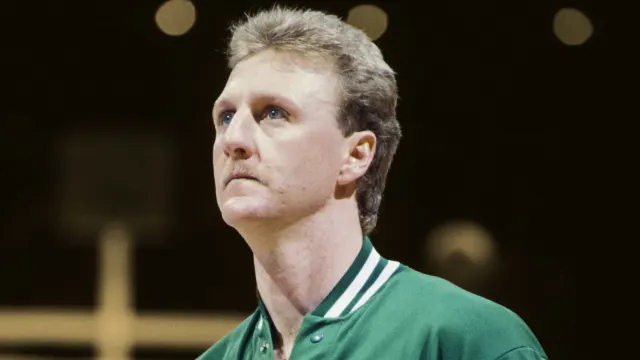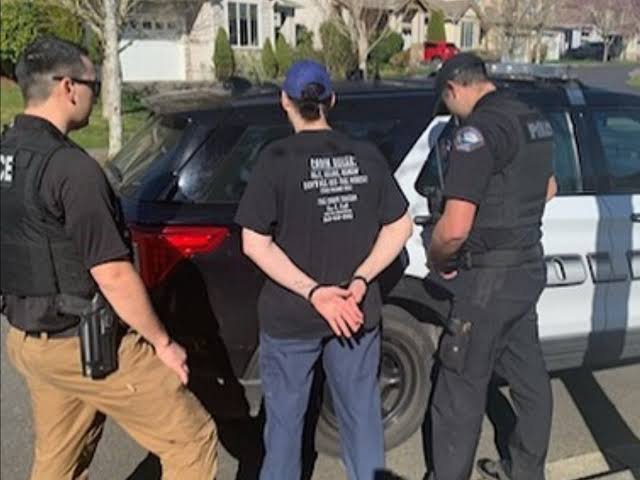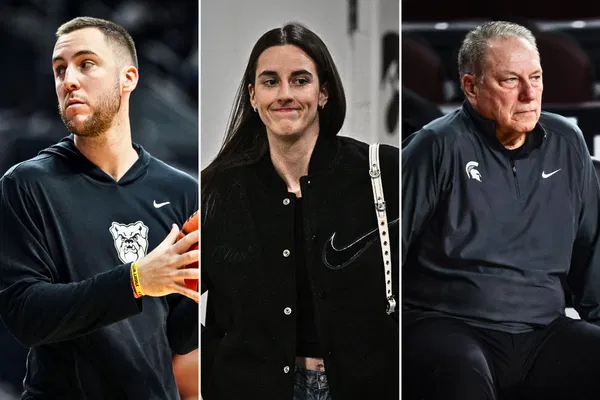
INDIANAPOLIS — Larry Moore was a tough kid from the region, a product of Hammond High, and he had no idea who this other Larry guy was. This other Larry was a razor thin, tall, gangly white kid who talked kind of strange, with a very country drawl, and who could be really funny, yet he never really smiled.
But Moore could tell one thing about this other Larry guy. He knew this kid named Larry Bird was too good to be playing second string on the Indiana All-Star team. And, to be honest, so was he.
But the team’s coach, Kirby Overman, had made up his mind and wasn’t budging. Steve Collier and Roy Taylor, the 1974 co-Mr. Basketballs, along with Walter Jordan and Wayne Walls, were his top guys. Bird and Moore, the two Larrys, were somewhere much further down on the roster of 11 and they didn’t particularly agree with that.
“We always felt we were better than the first group,” Moore told IndyStar, as the 50th anniversary of that 1974 Indiana All-Star team approached. “Quite frankly, we used to kick their behinds in practice.”
But in the All-Star games that year — which included not only the two Indiana-Kentucky matchups but several exhibition games, including one against a Russian team — Bird and Moore came off the bench. And as they sat the bench waiting for their time on the court, they made a pact with one another, a pact made partly in jest.
“We kind of laughed and said, ‘Look, when we get in the game, we ain’t passing to anybody else,’” said Moore. “I’d pass to Larry and he’d pass to me. We’d pretend we didn’t see anybody else open and we’d go in and bang our shots.”
Moore quickly realized Bird was a competitor. Moore may have come from Hammond High, 18 miles southeast of Chicago, and Bird may have come from Springs Valley High in French Lick, 217 miles south of that, but this Bird guy was no joke.
“He could really jump. He’d dunk on you,” Moore said. “He was pretty athletic for a little skinny kid.”
But Moore had no idea of the athleticism that would burst from that skinny kid in the years to follow. He had no idea Bird would become a basketball legend. He knew he was good for a high school kid from a Podunk town in Indiana, but he had no idea he would turn into Larry Bird.
“Oh, no, not a clue. He was just a young, 18-year-old kid like we all were. We were all stars in our own minds. We all thought we were great,” Moore said. “In my wildest imagination, I never had any idea Larry would become Larry Bird.”
‘Bird, get in the game.’ Bird refused. He was pissed.
It seemed Coach Overman didn’t have any idea, either, that he had a future three-time NBA champion on his bench.
“Nobody knew how good he was going to be,” Overman said in 1998 as Bird was set to coach the Eastern Conference team of the NBA All-Star game as Pacers coach. “I wouldn’t do it any different today knowing he’s all-world and everything else. He wouldn’t either if he was in my situation.”
The way the story has been told about Bird’s lack of playing time as an Indiana All-Star has variations depending on who’s telling it, said Mark Montieth, who wrote about the game for the Indianapolis News in 1998.
But one story is certain — and that’s a story about the second game in the two-game series against Kentucky when Bird had had enough watching from the sidelines inside Butler Fieldhouse, now Hinkle.
“In that second game, Overman, he kind of forgot about Larry. Bird had played a few minutes early, a few minutes in the first half,” said Montieth. “And then late in the game, the game’s almost over, and someone says, ‘Hey, you forgot about Larry.’ And Kirby, he said, ‘Bird, get in the game.’ Bird refused. He was pissed.”
The team was winning by a lot — ultimately taking a 110-95 victory over Kentucky — and to Bird those were meaningless minutes.
IndyStar reached out to Bird for this story, but hedeclined an interview request.



